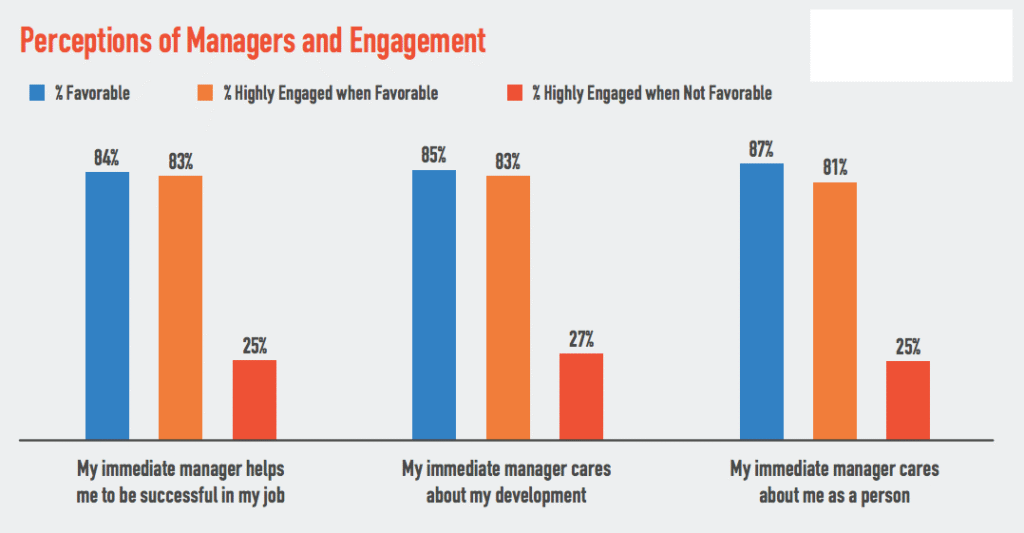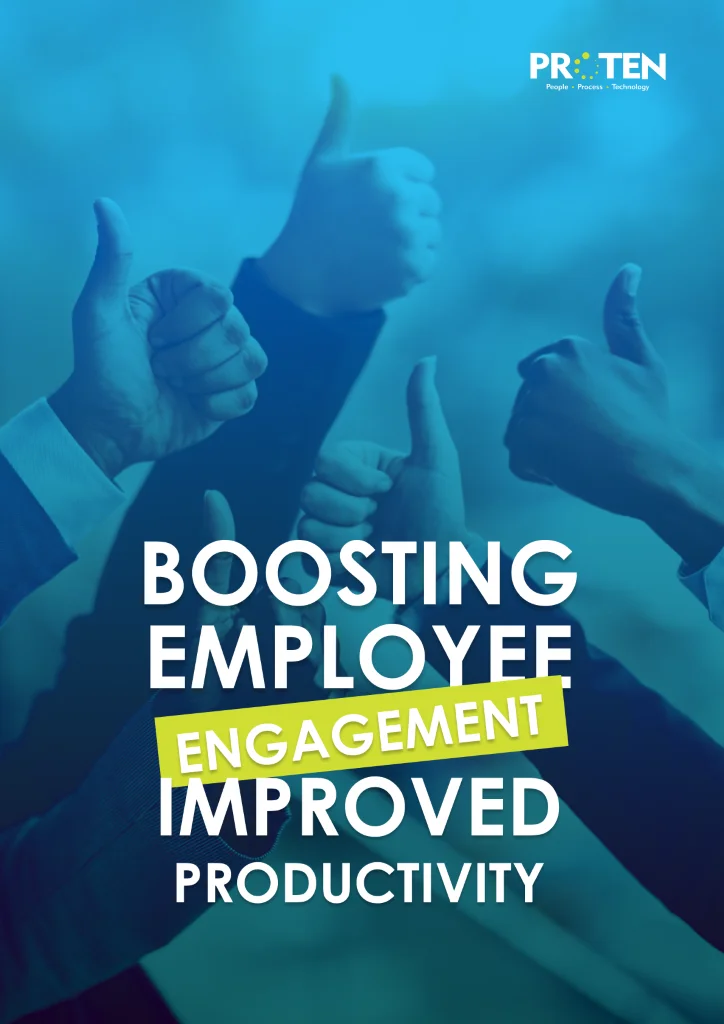Employee engagement is a pivotal factor in organisational success, directly influencing productivity, employee retention, and workplace morale. Engaged employees are not merely satisfied; they are emotionally invested in their organisation’s vision, leading to higher productivity, lower turnover, and enhanced customer satisfaction.

Source: LinkedIn
The correlation between engagement and productivity is well-established. A 2023 study by the Chartered Institute of Personnel and Development (CIPD) found that engaged employees are 20% more likely to exceed performance expectations. Conversely, disengaged employees contribute to absenteeism, reduced output, and workplace conflicts. For HR managers, executives, and business owners, prioritising engagement is a strategic imperative to maximise productivity and competitiveness.
This report provides a detailed roadmap for organisations to boost engagement and productivity. By implementing the strategies and recommendations laid out here, leaders can unlock their workforce’s potential and achieve sustainable growth.
2. Understanding Employee Engagement
2.1 Definition and Importance
Employee engagement is defined as the emotional commitment employees have to their organisation and its goals, resulting in discretionary effort and alignment with organisational objectives. According to Gallup’s 2023 State of the Global Workplace report, engaged employees are enthusiastic, proactive, and resilient, contributing to a positive workplace culture.
Key benefits of employee engagement include:
– Productivity: According to Gallup, engaged employees are 17% more productive than their disengaged counterparts. When employees feel connected to their work and the organisation’s mission, they put in more effort, show greater initiative, and consistently perform at higher levels.
– Retention: Employees who feel valued and motivated are far less likely to leave, reducing recruitment costs and preserving institutional knowledge. High engagement has been proven to reduce turnover by up to 59%.
– Customer Experience: Engaged employees deliver superior customer service, improving client retention by 18%. This is because motivated employees are more attentive, responsive, and emotionally invested in customer satisfaction, leading to stronger customer relationships.
– Profitability: Organisations with engaged workforces report 23% higher profitability. Higher productivity, better retention, and improved customer experiences all contribute to stronger financial outcomes for the business.
– Innovation: Engaged employees are more likely to propose creative solutions, driving organisational innovation. They feel empowered to share ideas, take initiative, and collaborate—creating a culture where innovation thrives.
3. Current Trends in Employee Engagement

Source: Smarp
Insights from recent research highlight several evolving trends that are shaping how organisations approach employee engagement, such as:
– Hybrid and Remote Work: The shift toward hybrid and remote work models continues to redefine engagement strategies. While employees increasingly value the autonomy and flexibility remote work offers, this model also presents challenges around connection and culture. As a result, organisations that can adopt remote and hybrid work models are investing in digital collaboration platforms, virtual team-building activities, and intentional communication practices to keep employees engaged, aligned, and motivated.
– Wellbeing Focus: Employee wellbeing has become a non-negotiable component of engagement strategies. Mental health, burnout prevention, and work-life balance are top priorities for employees, with 68% citing wellbeing support as a major factor in how engaged they feel at work (CIPD, 2023).
– AI and Technology: Organisations are increasingly using AI-powered tools to gain real-time insights into employee engagement. Technologies such as pulse surveys, sentiment analysis, and predictive analytics help HR teams detect engagement dips early and respond with timely, targeted interventions.
– Purpose-Driven Work: According to LinkedIn (2023), 74% of younger workers say they prioritise purpose over pay. Companies that align internal culture with external impact—through sustainability, social responsibility, or community impact—are more successful in attracting and retaining top talent.
– Employee Voice: There is a growing expectation that employees should have a say in shaping their workplace experience. Tools and platforms that enable regular feedback—like digital suggestion boxes, anonymous surveys, employee town halls, and one-on-one check-ins—are seen as vital. When employees feel heard and see their feedback lead to meaningful change, engagement and trust naturally increase.
4. Strategies to Boost Employee Engagement
To enhance engagement and productivity, HR managers, executives, and business owners can implement the following strategies:
4.1 Leadership and Communication
Effective leadership and clear communication are fundamental to driving employee engagement. Transparent leadership—where organisational goals, challenges, and achievements are communicated openly—helps build trust and alignment across teams. Regular touchpoints such as town halls, newsletters, and team briefings ensure employees feel informed and included.

Source: Quantum Workplace
Equipping managers with the right skills is also essential. A 2023 Gallup study found that teams with effective managers experience up to 70% higher engagement. Training leaders in coaching, empathy, and constructive feedback empowers them to lead with impact.
4.2 Recognition and Reward Systems
Recognising and rewarding employees in meaningful ways is a powerful driver of engagement and motivation. Timely recognition—whether through public praise, awards, or personalised messages—reinforces positive behaviour and boosts morale.
According to Workhuman’s 2024 report, employees who feel recognised are 44% more engaged. To maximise impact, rewards should be tailored to individual preferences, ranging from flexible working hours and gift cards to career development opportunities. In addition to top-down recognition, peer-to-peer acknowledgement plays a vital role in building a supportive and appreciative workplace culture.
4.3 Career Development and Growth Opportunities
Investing in employee development not only strengthens skills but also boosts loyalty and engagement. Providing access to learning programmes—such as online courses, certifications, and mentorship—equips employees to grow professionally, with a 2023 LinkedIn study revealing that 94% would stay longer at companies that prioritise their development. Clearly defined career pathways further enhance retention by giving employees a sense of direction and purpose.
Additionally, offering stretch assignments that challenge employees while aligning with their skills and career aspirations fosters motivation, builds confidence, and prepares them for future leadership roles.
4.4 Work-Life Balance and Wellbeing
Supporting employees’ work-life balance and overall wellbeing is essential for sustaining engagement and preventing burnout. Flexible work policies, including hybrid or remote options, give employees greater control over their schedules.
Wellbeing programmes, such as access to counselling, mindfulness apps, or stress management workshops, demonstrate an organisation’s commitment to employee health, with CIPD’s 2023 report showing that 76% of employees value employer-supported wellbeing initiatives. Equally important is the encouragement to take paid leave, supported by clear policies that allow employees to disconnect from work, recharge, and return with renewed energy and focus.
4.5 Inclusive and Collaborative Culture
Fostering an inclusive and collaborative workplace culture enhances engagement, innovation, and performance. Team-building activities, both virtual and in-person, including workshops, collaborative projects, and social gatherings, help strengthen relationships and trust among colleagues.
Embedding organisational values into daily operations further connects employees to a shared sense of purpose, creating a culture where everyone feels they belong and can contribute meaningfully.
5. Recommendations for HR Managers, Executives, and Business Owners
To boost engagement and productivity, leaders should:
1. Conduct an Engagement Audit: Use surveys and focus groups to assess current engagement levels and identify pain points.
2. Invest in Leadership Development: Train team leads and managers in coaching, communication, and empathy to drive team engagement.
3. Implement a Recognition Platform: Adopt online tools for peer-to-peer recognition. Platforms like Bonusly or Kudos would be very useful here.
4. Prioritise Wellbeing: Partner with HMOs and healthcare providers to offer mental health services and resources. Where possible, also adopt flexible work options.
5. Leverage Technology: Use AI-driven tools like Qualtrics or Culture Amp to monitor engagement and personalise employee experiences.
6. Align with Purpose: Communicate organisational values clearly and integrate them into daily operations.
6. Conclusion
Employee engagement is not just an HR initiative—it is the heartbeat of sustainable organisational success. Engaged employees drive higher productivity, stay longer, serve customers better, and bring fresh ideas that fuel innovation. Yet challenges such as ineffective leadership, burnout, and cultural misalignment can erode even the most promising workplace.
However, these challenges are entirely addressable. By embracing proven strategies—transparent and inspiring leadership, meaningful recognition, clear career pathways, wellbeing support, inclusive cultures, and technology-enabled engagement—organisations can unlock the full potential of their people and position themselves for long-term growth.
Your Next Step to a Thriving Workforce
The most successful organisations don’t wait for engagement to “happen”—they make it happen. At Proten International, we help HR leaders, executives, and business owners go beyond surface fixes to uncover the root causes of disengagement. Our comprehensive Employee Engagement Audit identifies gaps, benchmarks performance, and shapes a tailored engagement strategy designed to elevate productivity, boost retention, and spark innovation.
Don’t leave your people strategy to chance—turn your workforce into your greatest competitive advantage. Partner with Proten International today. Email info@protenintl.com or visit www.protenintl.com to start the process of transforming your organisation into a place where people love to work and perform at their best.

